Technology
AI-powered home security system strikes back with paintballs and tear gas
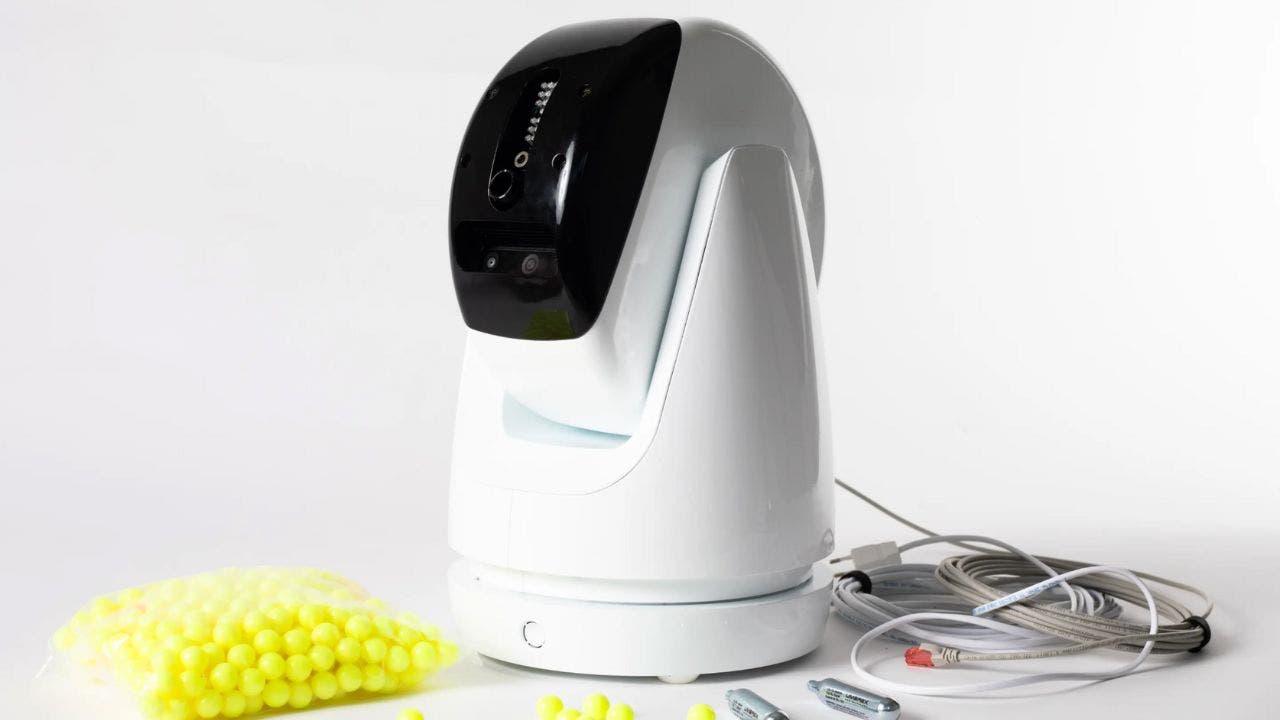
A company from Slovenia, called PaintCam, is shaking things up in the security world.
It has come up with this wild new gadget, the PaintCam Eve.
It’s not just another security camera watching over your house. This thing packs a punch with paintball and tear gas projectiles to really give intruders a surprise they won’t soon forget.
CLICK TO GET KURT’S FREE CYBERGUY NEWSLETTER WITH SECURITY ALERTS, QUICK VIDEO TIPS, TECH REVIEWS AND EASY HOW-TO’S TO MAKE YOU SMARTER
Eve security camera. (PaintCam)
How does the high-tech deterrent work?
The heart of Eve’s capability lies in its sophisticated computer vision technology. It can identify human faces and animals even in low-light conditions, distinguishing between friends and foes.
WHAT IS ARTIFICIAL INTELLIGENCE (AI)?
The system, which comes in 3 models, Eve, Eve +, and Eve Pro, allows homeowners to categorize visitors via an app interface — making decisions about who is welcome and who is not. But the most intriguing feature? When Eve detects an intruder, it issues a stern warning, and if not heeded, it proceeds to launch paintballs or tear gas.
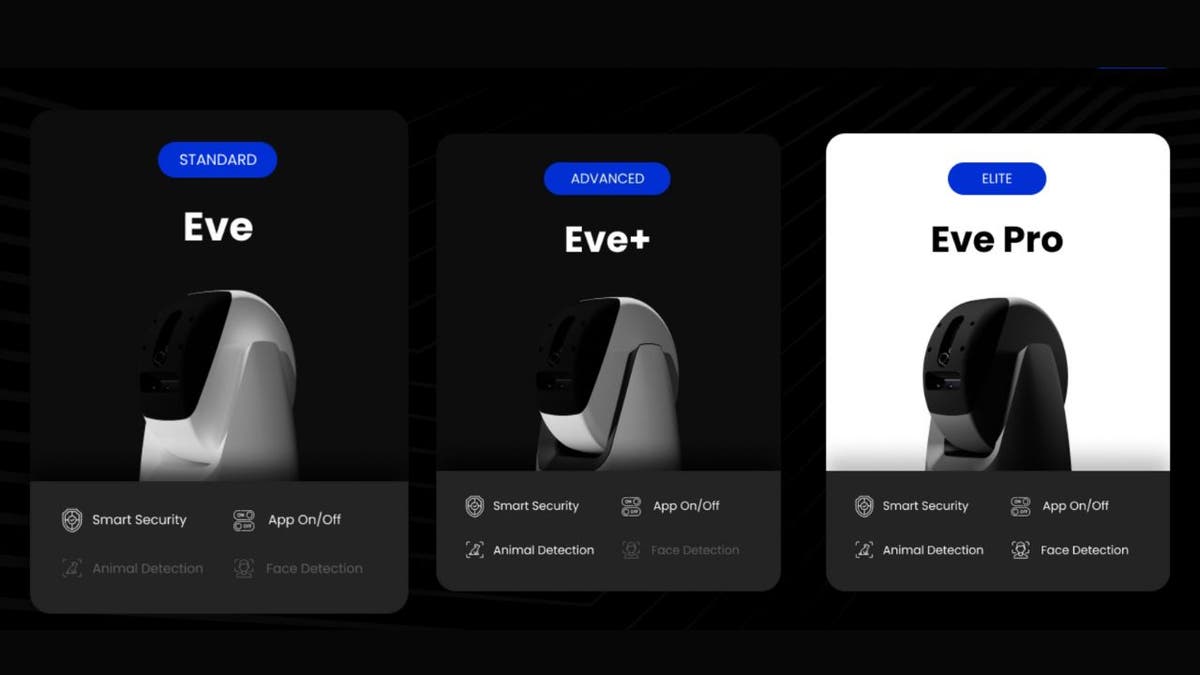
Eve security camera. (PaintCam)
MORE: CREEPY TOOL LETS CRIMINAL HACKERS ACCESS YOUR HOME VIDEO CAMERAS
User control and responsibility
PaintCam does offer users a significant degree of control. The system alerts the homeowner when an unknown person is detected in the company of someone known, asking whether to “take the shot” or not.
This feature places a heavy responsibility on the user, turning home security into a more interactive and potentially morally complex activity. How users will navigate these choices, especially in high-pressure situations, is yet to be seen.

Eve security camera. (PaintCam)
MORE: 6 BEST OUTDOOR SECURITY CAMERAS
Ethical and legal implications
While the prospect of a security camera that can “shoot” at intruders may sound appealing to some, it raises significant ethical and legal questions. The use of force, even non-lethal, by an autonomous system could lead to unintended consequences.
For instance, what happens if the system mistakenly identifies a neighbor or a child retrieving a lost toy as a threat? The legal ramifications of such scenarios remain unclear, making Eve a subject of debate among security experts and civil rights advocates alike.

Eve security camera. (PaintCam)
MORE: SNEAKY LIGHTBULB SECURITY CAMERAS ARE THE NEXT BIG THING IN HOME SECURITY
Market potential and challenges
The global home security market is set to garner a market size of an estimated $106.3 billion by 2030, indicating a vast potential customer base for innovative products like Eve. However, its market success will depend not only on consumer interest but also on navigating the legal landscape and public perception challenges that such a confrontational device presents.
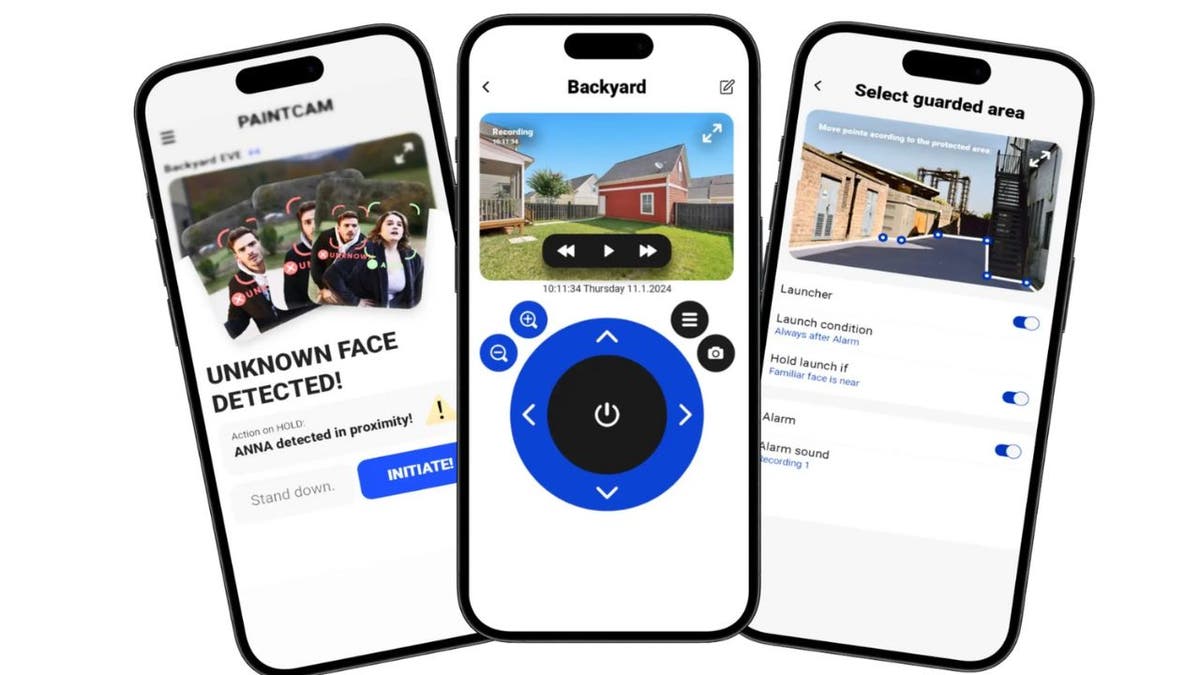
Eve security camera app. (PaintCam)
When will Eve be available?
PaintCam launched Eve with a Kickstarter campaign on Tuesday. At the time of publishing, the exact cost of the security device has not yet been disclosed. You can sign up for notifications about the product on PaintCam’s official website, as well as on the Kickstarter product page.
PaintCam’s commitment to proactive defense
The company posted this mission statement on its site:
“We offer innovative solutions that seamlessly integrate with your environment, establishing both passive presence and active deterrence. Our unwavering commitment is to make the world a safer place, not by fortifying intimidation strongholds, but by delivering intelligent, adaptable, and elegant security options.”
Kurt’s key takeaways
This innovation invites us to reflect on the nature of home security. Are we moving towards a future where our homes are not just passively protected but actively defended by machines? And at what point does the integration of such technology in our daily lives challenge our notions of privacy and safety? Only time will tell whether systems like Eve will become the new norm or remain a curious footnote in the evolution of home security technologies.
Considering the potential for mistakes, do you feel comfortable with the idea of a security system like PaintCam Eve that can autonomously deploy paintballs or tear gas? Let us know by writing us at Cyberguy.com/Contact
For more of my tech tips & security alerts, subscribe to my free CyberGuy Report Newsletter by heading to Cyberguy.com/Newsletter
Ask Kurt a question or let us know what stories you’d like us to cover.
Answers to the most-asked CyberGuy questions:
Copyright 2024 CyberGuy.com. All rights reserved.

Technology
Boeing Starliner’s crew flight test delayed due to a valve problem
/cdn.vox-cdn.com/uploads/chorus_asset/file/25436042/2151613500.jpg)
NASA will attempt to send a pair of astronauts to space aboard Boeing’s Starliner aircraft for the first time soon, but not today. As the the astronauts settled into place, officials scrubbed Monday night’s planned launch attempt at around 8:30PM ET, due to “a faulty oxygen relief valve observation” on the ULA Atlas V rocket’s Centaur second stage. Another launch window is available on Tuesday night, but it’s unclear whether they will be able to reset that quickly.
The launch was scheduled to take place at 10:34PM ET from the Cape Canaveral Space Force Station in Florida, with a livestream available on NASA’s YouTube channel.
The United Launch Alliance’s Atlas V rocket will propel the Starliner aircraft to space, where it will stay at the ISS for one week. While on board, flight commander Butch Wilmore and pilot Suni Williams will test the Starliner’s capabilities, including launching, docking, and its eventual return to Earth.
Boeing built the Starliner as part of its $4.2 billion contract with NASA, which encourages the development of new spacecraft from private companies through the agency’s Commercial Crew Program.
If all goes well during this flight, NASA will certify Starliner, allowing it to ferry NASA astronauts between Earth and the ISS. This could make the Starliner a new rival for SpaceX, which has been carrying NASA astronauts to space since 2020.
Update May 6th: Added details about scrubbed Monday night launch attempt.
Technology
How much would you pay for this prototype Super Famicom with a headphone jack?
/cdn.vox-cdn.com/uploads/chorus_asset/file/25436323/Super_Famicom_prototype.jpeg)
Some other variations include a big red power switch and the fact that the controller ports are on the left side of the console, rather than centered as they were in the eventual production model. There’s also what looks like the console’s expansion port on the front, rather than the bottom where it lived on the final design. The panel surrounding the controller ports looks yellowed — it wouldn’t be part of the SNES family without that though, would it?
Here’s a gallery of the images from the auction:
Compare that to the final release:
And the terrible thing we ended up with in the US:
Those design touches went out the window for the SNES released in the US, which ended up with a chunky, boxy design that had purple, sliding switches on top instead of the round, sloping, compact design. Nintendo released a revised SNES, the New-Style Super NES, in 1997 that came a little closer, but with a pill-shaped power switch and circular reset button.
Another lost Nintendo prototype showed up a few years ago in the Nintendo / Sony PlayStation that Pets.com founder Greg McLemore bought at an auction — which also had a headphone jack. Two years before that, an unreleased, wired version of the Wiimote that connects to the GameCube was sold in a Japanese auction for $660. The Super Famicom prototype being auctioned today is, as of this writing, sitting at just over one million yen (just shy of $7,000 USD), with more than five days to go.
Technology
Are these robots making humans obsolete for home and repair tasks?
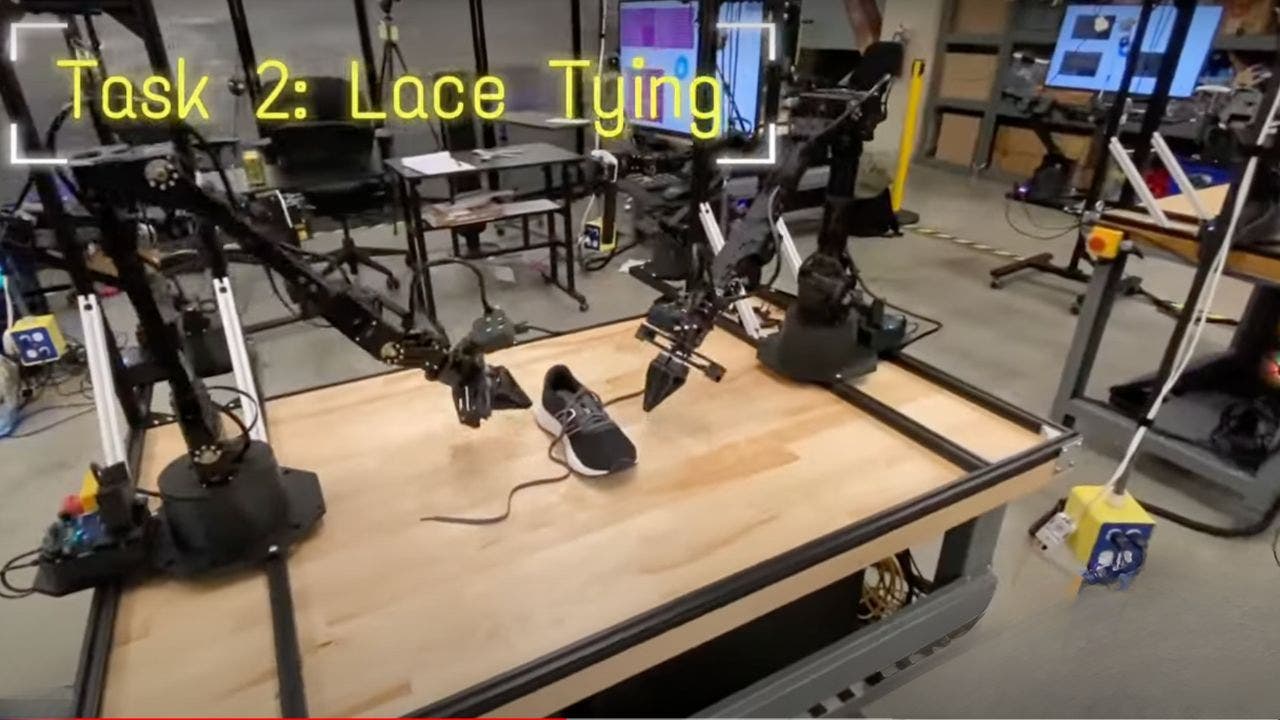
‘CyberGuy’: Robots repairing robots
Kurt Knutsson reveals how the Aloha Unleashed project showcases a dual-arm robot system that autonomously performs tasks, demonstrating remarkable precision in robotics.
In a groundbreaking development, researchers have unveiled the impressive capabilities of the Aloha Unleashed project. This project, spearheaded by Stanford Ph.D. student Tony Z. Zhao and assistant professor Chelsea Finn from the Mobile Aloha team, showcases the next level of robotic dexterity.
CLICK TO GET KURT’S FREE CYBERGUY NEWSLETTER WITH SECURITY ALERTS, QUICK VIDEO TIPS, TECH REVIEWS AND EASY HOW-TO’S TO MAKE YOU SMARTER
Autonomous robot (Aloha Unleashed project) (Kurt “CyberGuy” Knutsson)
The Aloha Unleashed Project
The Aloha Unleashed project builds upon the success of the original Aloha housekeeping robot. Back in January, the research team wowed the world by demonstrating the kitchen skills of an open-source Aloha robot. Now, they’ve taken it a step further, focusing on intricate tasks like knotting shoelaces, hanging shirts and even repairing other robots.
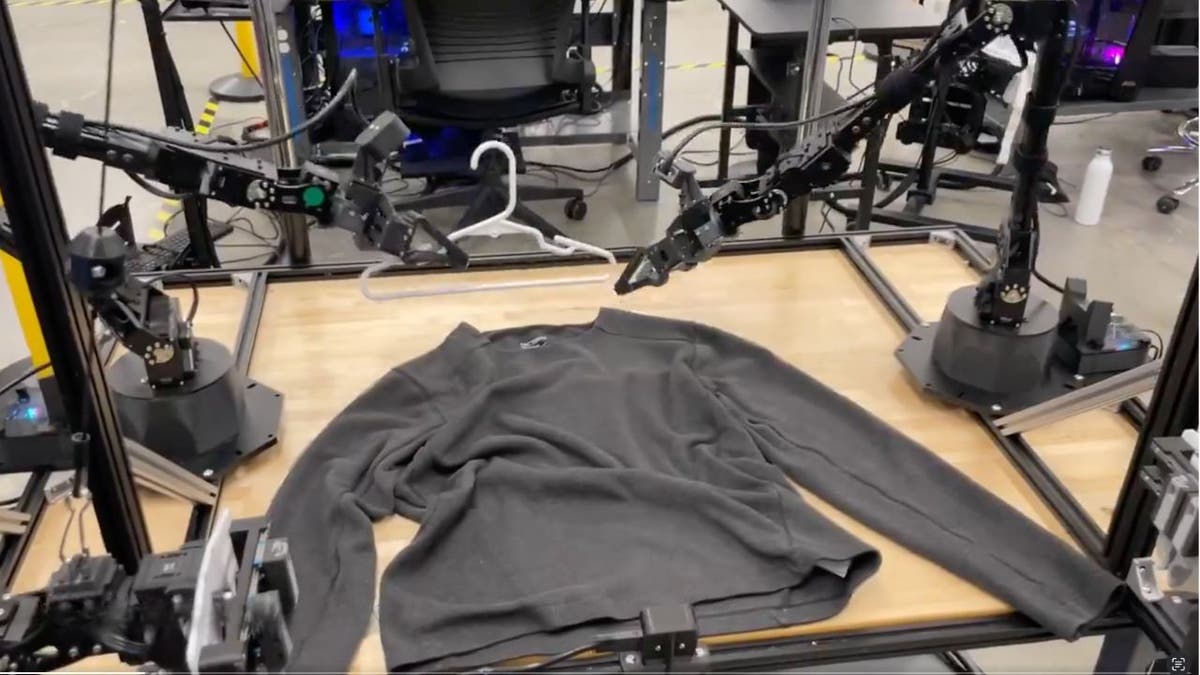
Autonomous robot (Aloha Unleashed project) (Kurt “CyberGuy” Knutsson)
MORE: APOLLO THE ROBOT JOINS MERCEDES-BENZ ASSEMBLY LINE PRODUCTION
Enhancements and innovations
The team behind Aloha Unleashed has made five key upgrades to the robot’s design:
1) Improved manipulator arms: The Aloha 2 manipulator arms are at the heart of this project. These arms have been meticulously developed to enhance performance and durability. Facing pairs of these arms allows for more complex tasks and fleet-scale data collection.
2) Smarter grippers: The scissor mechanism on the grippers has been replaced with a low-friction rail. This modification enables the robot to grasp smaller objects with precision.
3) Advanced cameras: Smaller RealSense cameras with a broader field of view provide better visual input for the robot’s decision-making process.
4) Gravity compensation: A passive gravity compensation setup, using off-the-shelf components, supports leader arms during teleoperation.
5) Simulation model: The team has created an improved simulation model that enhances accuracy and visual fidelity. This model aids in training the robot for various tasks.
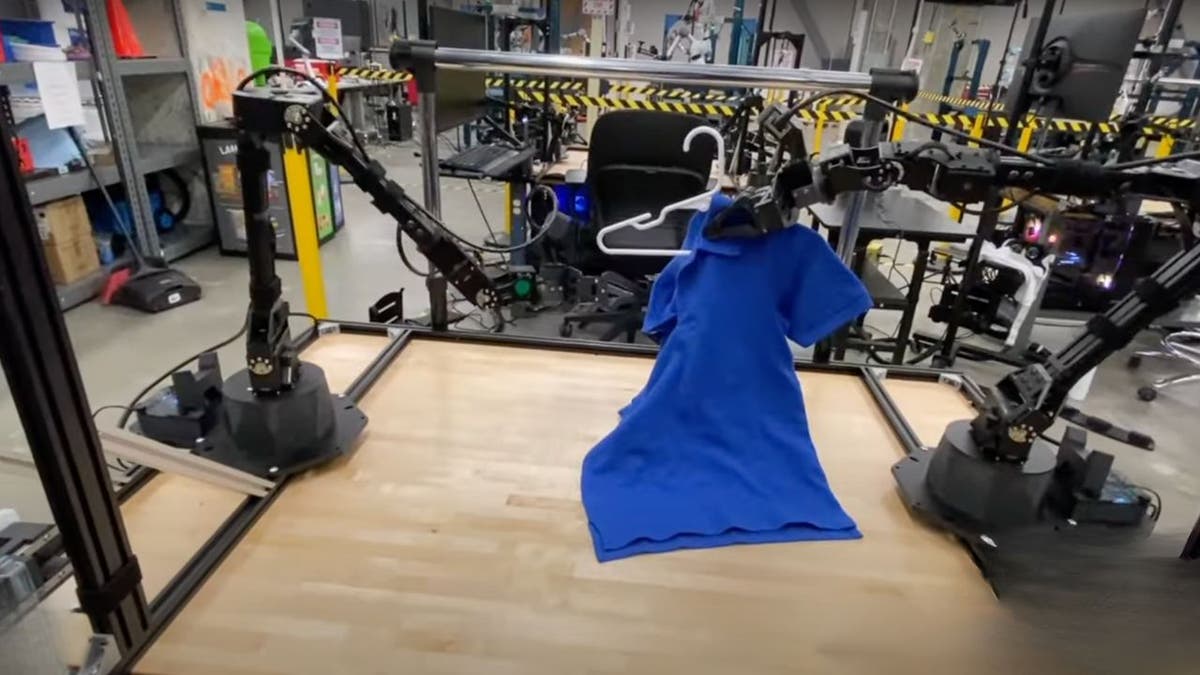
Autonomous robot (Aloha Unleashed project) (Kurt “CyberGuy” Knutsson)
MORE: HUMANOID ROBOTS ARE NOW DOING WORK OF HUMANS IN SPANX WAREHOUSE
Autonomous performance and adaptability
Over the past year, researchers have pushed the limits of the Aloha 2 fleet. They’ve released a series of videos showcasing the dual-arm setup autonomously performing tasks.
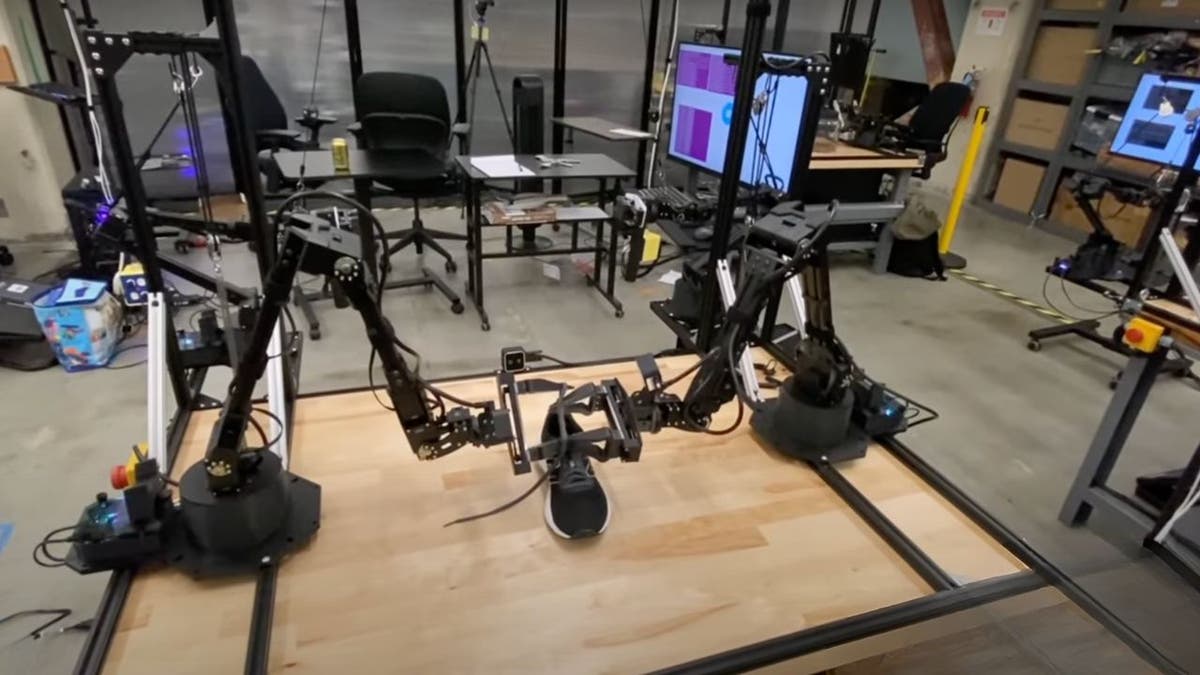
Autonomous robot (Aloha Unleashed project) (Kurt “CyberGuy” Knutsson)
Tying shoelaces
The manipulator arms deftly tie shoelaces, demonstrating their precision and agility.
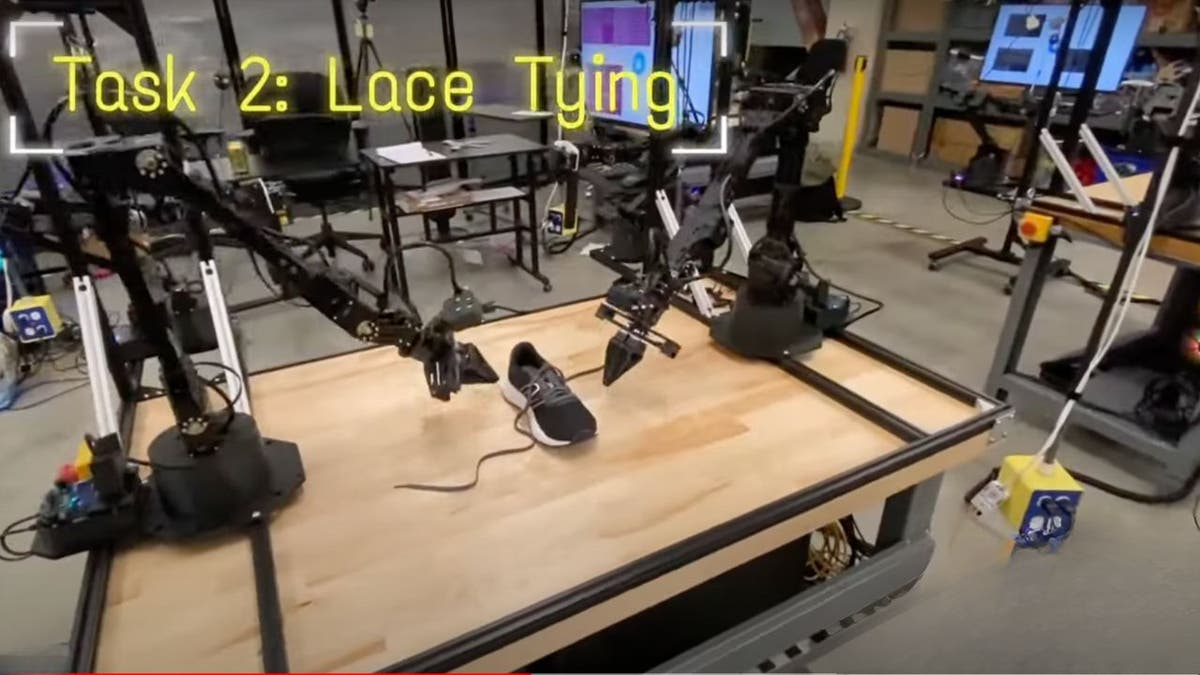
Autonomous robot (Aloha Unleashed project) (Kurt “CyberGuy” Knutsson)
Robot repair
The robot assists DeepMind’s SARA-RT model in a fascinating demo by slotting in a replacement gripper/finger. This hints at a future where robots can repair each other autonomously.
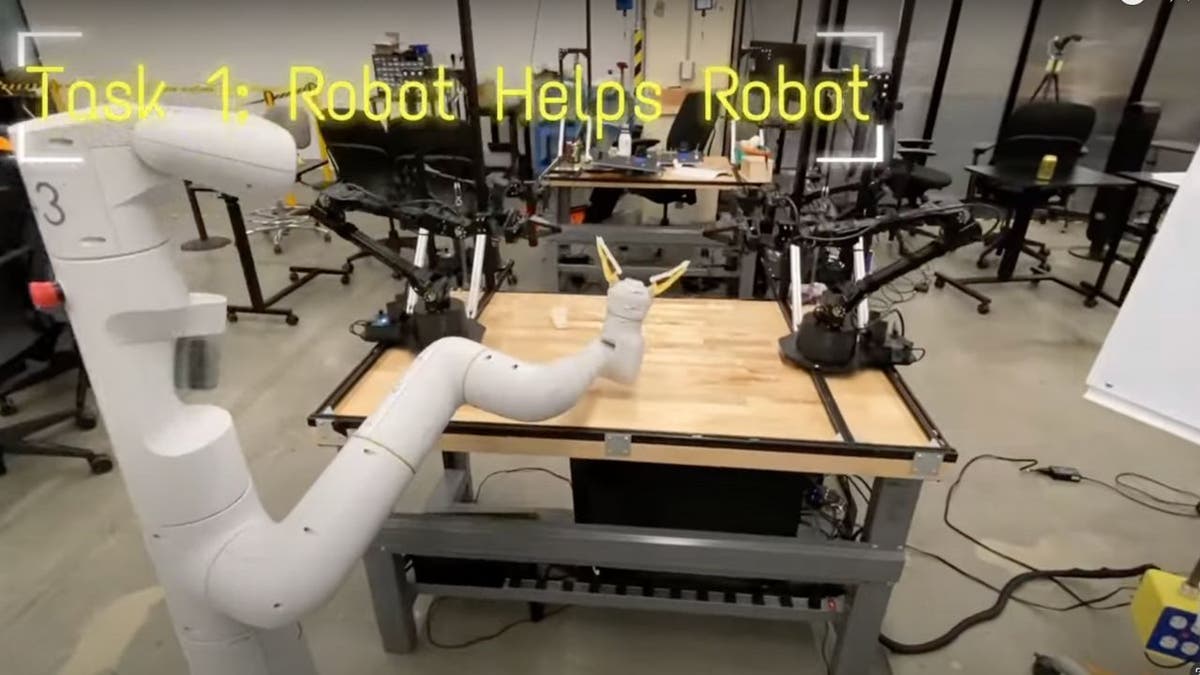
Autonomous robot (Aloha Unleashed project) (Kurt “CyberGuy” Knutsson)
MORE: UNFORGETTABLE MOTHER’S DAY GIFTS 2024
Hanging a T-shirt
The Aloha manipulators tackle the challenge of getting a T-shirt on a hanger and placing it on a nearby rack. Despite not having specific examples of adult shirts during training, the model generalizes successfully.

Autonomous robot (Aloha Unleashed project) (Kurt “CyberGuy” Knutsson)
It’s worth noting that the robot adapts to real-time slips and placement issues during the demonstrations.
MORE: HOW 1X’S HUMANOID ROBOT IS PUTTING A STOP TO YOU HAVING TO FOLD LAUNDRY
Kurt’s key takeaways
The Aloha Unleashed project is an ongoing endeavor with immense potential. As we witness robots seamlessly performing complex tasks, we glimpse a future where automation and adaptability go hand in hand. If you’re intrigued by manipulator action, consider exploring the Aloha research kit available from Trossen Robotics.
What other groundbreaking applications can you envision for dual-arm robot systems like Aloha Unleashed? Let us know by writing us at Cyberguy.com/Contact.
For more of my tech tips and security alerts, subscribe to my free CyberGuy Report Newsletter by heading to Cyberguy.com/Newsletter.
Ask Kurt a question or let us know what stories you’d like us to cover.
Answers to the most asked CyberGuy questions:
Copyright 2024 CyberGuy.com. All rights reserved.
-

 News1 week ago
News1 week agoBoth sides prepare as Florida's six-week abortion ban is set to take effect Wednesday
-

 Politics1 week ago
Politics1 week agoGOP Rep. Bill Posey won't seek re-election, endorses former Florida Senate President as replacement
-

 World1 week ago
World1 week agoRussian forces gained partial control of Donetsk's Ocheretyne town
-

 Politics1 week ago
Politics1 week agoHouse Republicans brace for spring legislative sprint with one less GOP vote
-

 World1 week ago
World1 week agoAt least four dead in US after dozens of tornadoes rip through Oklahoma
-

 World1 week ago
World1 week agoZelenskyy warns of Russian nuclear risks on Chernobyl anniversary
-
Movie Reviews1 week ago
Challengers Movie Review
-

 Politics1 week ago
Politics1 week agoAnti-Trump DA's no-show at debate leaves challenger facing off against empty podium















